Xiang Wan
ShizhenGPT: Towards Multimodal LLMs for Traditional Chinese Medicine
Aug 20, 2025Abstract:Despite the success of large language models (LLMs) in various domains, their potential in Traditional Chinese Medicine (TCM) remains largely underexplored due to two critical barriers: (1) the scarcity of high-quality TCM data and (2) the inherently multimodal nature of TCM diagnostics, which involve looking, listening, smelling, and pulse-taking. These sensory-rich modalities are beyond the scope of conventional LLMs. To address these challenges, we present ShizhenGPT, the first multimodal LLM tailored for TCM. To overcome data scarcity, we curate the largest TCM dataset to date, comprising 100GB+ of text and 200GB+ of multimodal data, including 1.2M images, 200 hours of audio, and physiological signals. ShizhenGPT is pretrained and instruction-tuned to achieve deep TCM knowledge and multimodal reasoning. For evaluation, we collect recent national TCM qualification exams and build a visual benchmark for Medicinal Recognition and Visual Diagnosis. Experiments demonstrate that ShizhenGPT outperforms comparable-scale LLMs and competes with larger proprietary models. Moreover, it leads in TCM visual understanding among existing multimodal LLMs and demonstrates unified perception across modalities like sound, pulse, smell, and vision, paving the way toward holistic multimodal perception and diagnosis in TCM. Datasets, models, and code are publicly available. We hope this work will inspire further exploration in this field.
An Investigation of Robustness of LLMs in Mathematical Reasoning: Benchmarking with Mathematically-Equivalent Transformation of Advanced Mathematical Problems
Aug 12, 2025Abstract:In this paper, we introduce a systematic framework beyond conventional method to assess LLMs' mathematical-reasoning robustness by stress-testing them on advanced math problems that are mathematically equivalent but with linguistic and parametric variation. These transformations allow us to measure the sensitivity of LLMs to non-mathematical perturbations, thereby enabling a more accurate evaluation of their mathematical reasoning capabilities. Using this new evaluation methodology, we created PutnamGAP, a new benchmark dataset with multiple mathematically-equivalent variations of competition-level math problems. With the new dataset, we evaluate multiple families of representative LLMs and examine their robustness. Across 18 commercial and open-source models we observe sharp performance degradation on the variants. OpenAI's flagship reasoning model, O3, scores 49 % on the originals but drops by 4 percentage points on surface variants, and by 10.5 percentage points on core-step-based variants, while smaller models fare far worse. Overall, the results show that the proposed new evaluation methodology is effective for deepening our understanding of the robustness of LLMs and generating new insights for further improving their mathematical reasoning capabilities.
Multi-RIS Deployment Optimization for mmWave ISAC Systems in Real-World Environments
Aug 10, 2025Abstract:Reconfigurable intelligent surface-assisted integrated sensing and communication (RIS-ISAC) presents a promising system architecture to leverage the wide bandwidth available at millimeter-wave (mmWave) frequencies, while mitigating severe signal propagation losses and reducing infrastructure costs. To enhance ISAC functionalities in the future air-ground integrated network applications, RIS deployment must be carefully designed and evaluated, which forms the core motivation of this paper. To ensure practical relevance, a multi-RIS-ISAC system is established, with its signal model at mmWave frequencies demonstrated using ray-launching calibrated to real-world environments. On this basis, an energy-efficiency-driven optimization problem is formulated to minimize the multi-RIS size-to-coverage sum ratio, comprehensively considering real-world RIS deployment constraints, positions, orientations, as well as ISAC beamforming strategies at both the base station and the RISs. To solve the resulting non-convex mixed-integer problem, a simplified reformulation based on equivalent gain scaling method is introduced. A two-step iterative algorithm is then proposed, in which the deployment parameters are determined under fixed RIS positions in the first step, and the RIS position set is updated in the second step to progressively approach the optimum solution. Simulation results based on realistic parameter benchmarks present that the optimized RISs deployment significantly enhances communication coverage and sensing accuracy with the minimum RIS sizes, outperforming existing approaches.
Towards Assessing Medical Ethics from Knowledge to Practice
Aug 07, 2025Abstract:The integration of large language models into healthcare necessitates a rigorous evaluation of their ethical reasoning, an area current benchmarks often overlook. We introduce PrinciplismQA, a comprehensive benchmark with 3,648 questions designed to systematically assess LLMs' alignment with core medical ethics. Grounded in Principlism, our benchmark features a high-quality dataset. This includes multiple-choice questions curated from authoritative textbooks and open-ended questions sourced from authoritative medical ethics case study literature, all validated by medical experts. Our experiments reveal a significant gap between models' ethical knowledge and their practical application, especially in dynamically applying ethical principles to real-world scenarios. Most LLMs struggle with dilemmas concerning Beneficence, often over-emphasizing other principles. Frontier closed-source models, driven by strong general capabilities, currently lead the benchmark. Notably, medical domain fine-tuning can enhance models' overall ethical competence, but further progress requires better alignment with medical ethical knowledge. PrinciplismQA offers a scalable framework to diagnose these specific ethical weaknesses, paving the way for more balanced and responsible medical AI.
Large Language Models for Outpatient Referral: Problem Definition, Benchmarking and Challenges
Mar 11, 2025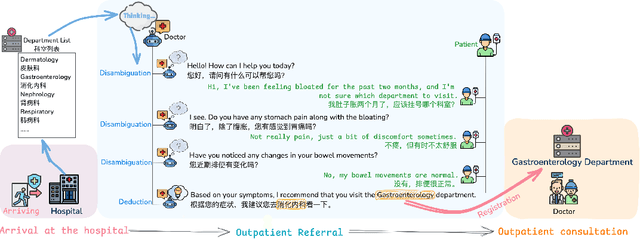


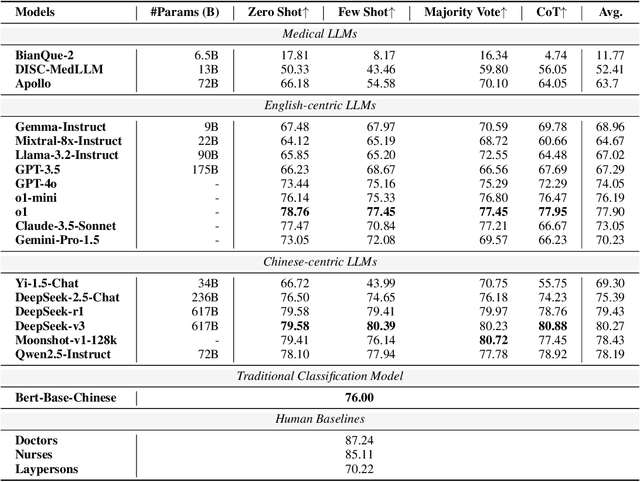
Abstract:Large language models (LLMs) are increasingly applied to outpatient referral tasks across healthcare systems. However, there is a lack of standardized evaluation criteria to assess their effectiveness, particularly in dynamic, interactive scenarios. In this study, we systematically examine the capabilities and limitations of LLMs in managing tasks within Intelligent Outpatient Referral (IOR) systems and propose a comprehensive evaluation framework specifically designed for such systems. This framework comprises two core tasks: static evaluation, which focuses on evaluating the ability of predefined outpatient referrals, and dynamic evaluation, which evaluates capabilities of refining outpatient referral recommendations through iterative dialogues. Our findings suggest that LLMs offer limited advantages over BERT-like models, but show promise in asking effective questions during interactive dialogues.
Add-One-In: Incremental Sample Selection for Large Language Models via a Choice-Based Greedy Paradigm
Mar 04, 2025Abstract:Selecting high-quality and diverse training samples from extensive datasets plays a crucial role in reducing training overhead and enhancing the performance of Large Language Models (LLMs). However, existing studies fall short in assessing the overall value of selected data, focusing primarily on individual quality, and struggle to strike an effective balance between ensuring diversity and minimizing data point traversals. Therefore, this paper introduces a novel choice-based sample selection framework that shifts the focus from evaluating individual sample quality to comparing the contribution value of different samples when incorporated into the subset. Thanks to the advanced language understanding capabilities of LLMs, we utilize LLMs to evaluate the value of each option during the selection process. Furthermore, we design a greedy sampling process where samples are incrementally added to the subset, thereby improving efficiency by eliminating the need for exhaustive traversal of the entire dataset with the limited budget. Extensive experiments demonstrate that selected data from our method not only surpass the performance of the full dataset but also achieves competitive results with state-of-the-art (SOTA) studies, while requiring fewer selections. Moreover, we validate our approach on a larger medical dataset, highlighting its practical applicability in real-world applications.
BS-LDM: Effective Bone Suppression in High-Resolution Chest X-Ray Images with Conditional Latent Diffusion Models
Dec 24, 2024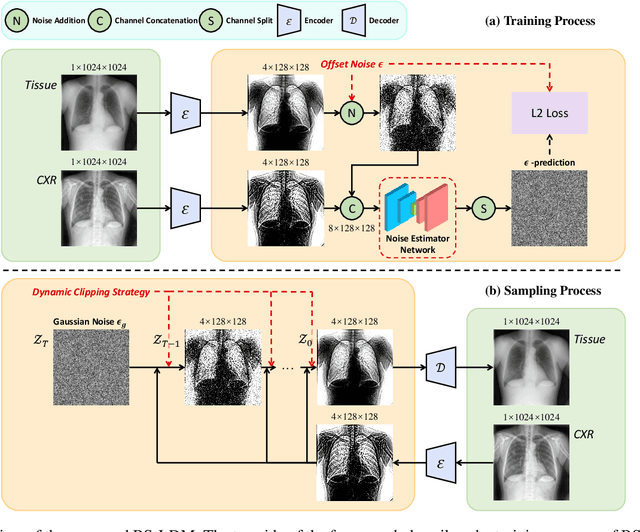

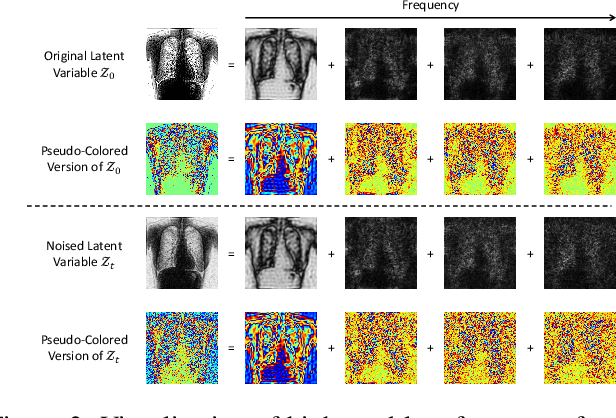

Abstract:The interference of overlapping bones and pulmonary structures can reduce the effectiveness of Chest X-ray (CXR) examinations. Bone suppression techniques have been developed to improve diagnostic accuracy. Dual-energy subtraction (DES) imaging, a common method for bone suppression, is costly and exposes patients to higher radiation levels. Deep learning-based image generation methods have been proposed as alternatives, however, they often fail to produce high-quality and high-resolution images, resulting in the loss of critical lesion information and texture details. To address these issues, in this paper, we introduce an end-to-end framework for bone suppression in high-resolution CXR images, termed BS-LDM. This framework employs a conditional latent diffusion model to generate high-resolution soft tissue images with fine detail and critical lung pathology by performing bone suppression in the latent space. We implement offset noise during the noise addition phase of the training process to better render low-frequency information in soft tissue images. Additionally, we introduce a dynamic clipping strategy during the sampling process to refine pixel intensity in the generated soft tissue images. We compiled a substantial and high-quality bone suppression dataset, SZCH-X-Rays, including high-resolution paired CXR and DES soft tissue images from 818 patients, collected from our partner hospitals. Moreover, we pre-processed 241 pairs of CXR and DES soft tissue images from the JSRT dataset, the largest publicly available dataset. Comprehensive experimental and clinical evaluations demonstrate that BS-LDM exhibits superior bone suppression capabilities, highlighting its significant clinical potential.
Privacy-Preserving Federated Foundation Model for Generalist Ultrasound Artificial Intelligence
Nov 25, 2024



Abstract:Ultrasound imaging is widely used in clinical diagnosis due to its non-invasive nature and real-time capabilities. However, conventional ultrasound diagnostics face several limitations, including high dependence on physician expertise and suboptimal image quality, which complicates interpretation and increases the likelihood of diagnostic errors. Artificial intelligence (AI) has emerged as a promising solution to enhance clinical diagnosis, particularly in detecting abnormalities across various biomedical imaging modalities. Nonetheless, current AI models for ultrasound imaging face critical challenges. First, these models often require large volumes of labeled medical data, raising concerns over patient privacy breaches. Second, most existing models are task-specific, which restricts their broader clinical utility. To overcome these challenges, we present UltraFedFM, an innovative privacy-preserving ultrasound foundation model. UltraFedFM is collaboratively pre-trained using federated learning across 16 distributed medical institutions in 9 countries, leveraging a dataset of over 1 million ultrasound images covering 19 organs and 10 ultrasound modalities. This extensive and diverse data, combined with a secure training framework, enables UltraFedFM to exhibit strong generalization and diagnostic capabilities. It achieves an average area under the receiver operating characteristic curve of 0.927 for disease diagnosis and a dice similarity coefficient of 0.878 for lesion segmentation. Notably, UltraFedFM surpasses the diagnostic accuracy of mid-level ultrasonographers and matches the performance of expert-level sonographers in the joint diagnosis of 8 common systemic diseases. These findings indicate that UltraFedFM can significantly enhance clinical diagnostics while safeguarding patient privacy, marking an advancement in AI-driven ultrasound imaging for future clinical applications.
An Empirical Study on Information Extraction using Large Language Models
Sep 04, 2024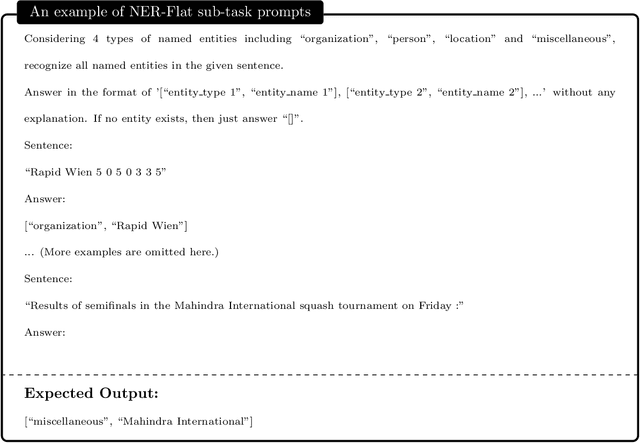
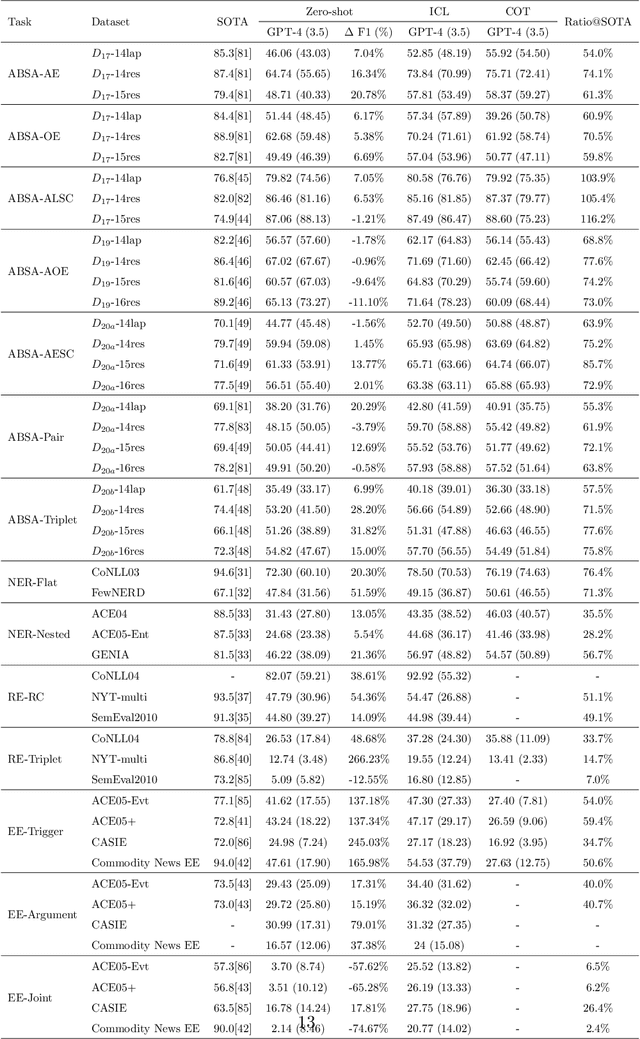
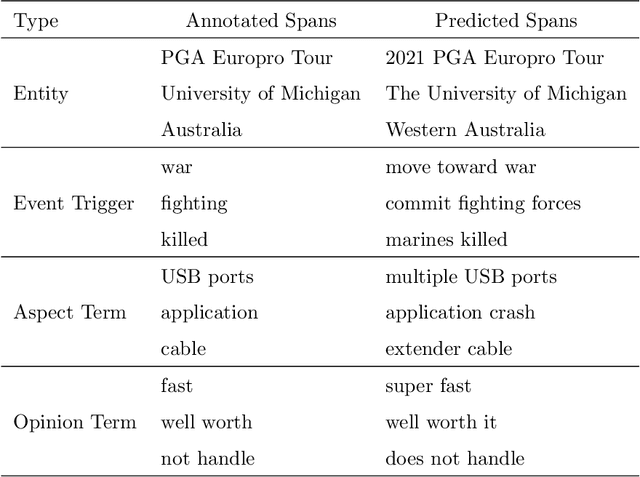
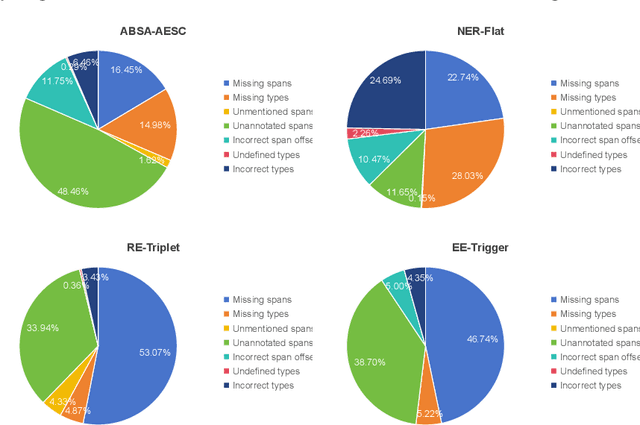
Abstract:Human-like large language models (LLMs), especially the most powerful and popular ones in OpenAI's GPT family, have proven to be very helpful for many natural language processing (NLP) related tasks. Therefore, various attempts have been made to apply LLMs to information extraction (IE), which is a fundamental NLP task that involves extracting information from unstructured plain text. To demonstrate the latest representative progress in LLMs' information extraction ability, we assess the information extraction ability of GPT-4 (the latest version of GPT at the time of writing this paper) from four perspectives: Performance, Evaluation Criteria, Robustness, and Error Types. Our results suggest a visible performance gap between GPT-4 and state-of-the-art (SOTA) IE methods. To alleviate this problem, considering the LLMs' human-like characteristics, we propose and analyze the effects of a series of simple prompt-based methods, which can be generalized to other LLMs and NLP tasks. Rich experiments show our methods' effectiveness and some of their remaining issues in improving GPT-4's information extraction ability.
Self-Instructed Derived Prompt Generation Meets In-Context Learning: Unlocking New Potential of Black-Box LLMs
Sep 03, 2024

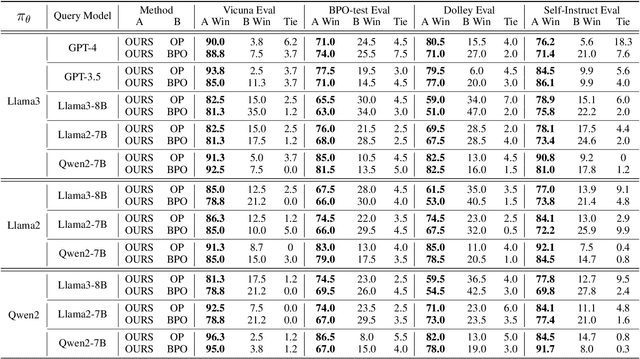
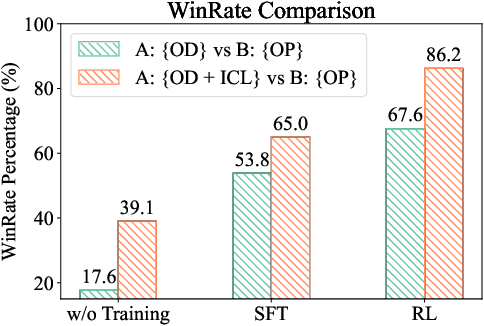
Abstract:Large language models (LLMs) have shown success in generating high-quality responses. In order to achieve better alignment with LLMs with human preference, various works are proposed based on specific optimization process, which, however, is not suitable to Black-Box LLMs like GPT-4, due to inaccessible parameters. In Black-Box LLMs case, their performance is highly dependent on the quality of the provided prompts. Existing methods to enhance response quality often involve a prompt refinement model, yet these approaches potentially suffer from semantic inconsistencies between the refined and original prompts, and typically overlook the relationship between them. To address these challenges, we introduce a self-instructed in-context learning framework that empowers LLMs to deliver more effective responses by generating reliable derived prompts to construct informative contextual environments. Our approach incorporates a self-instructed reinforcement learning mechanism, enabling direct interaction with the response model during derived prompt generation for better alignment. We then formulate querying as an in-context learning task, using responses from LLMs combined with the derived prompts to establish a contextual demonstration for the original prompt. This strategy ensures alignment with the original query, reduces discrepancies from refined prompts, and maximizes the LLMs' in-context learning capability. Extensive experiments demonstrate that the proposed method not only generates more reliable derived prompts but also significantly enhances LLMs' ability to deliver more effective responses, including Black-Box models such as GPT-4.
 Add to Chrome
Add to Chrome Add to Firefox
Add to Firefox Add to Edge
Add to Edge